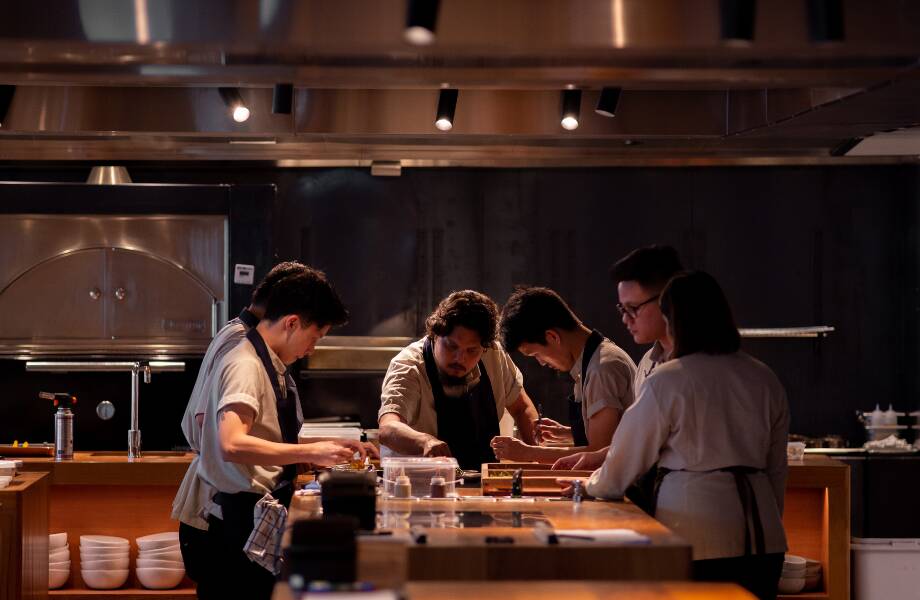Among Chinese consumers under 35 in Shanghai, coffee is cool. Tea? That’s for taxi drivers and parents, who waste their time and money brewing loose leaves.
But tea is back, and not just the cheese tea variety that has hit like a meteorite in 2017. Yes — cheese-topped tea is the year’s major China food trend, with some estimates showing that chain store Heytea may take in as much as RMB 100,000 (~$15,000) per day.
But there’s a significant spin-off from this trend now brewing: young Chinese consumers are using cheese tea as a gateway drug, and being ushered deeper into the world of high mountain oolongs and sticky cakes of pu’er. Tea is becoming cool again.
Shops like ZeeTea, which opened in early summer 2017 in Shanghai, aim to do for tea what patisseries did for eggs and sugar, and what hip chains like Seesaw did for coffee. They want to elevate it into a product for the Chinese consumer to fetishize, and they do that with a menu exclusively of tea drinks, from cold-brew Taiwanese oolongs to “tea pots”: boiled teas, usually with alcohol, that bubble away in copper pots at the front of the shop. At ZeeTea, tea-flavored desserts are arranged in a glass case like museum pieces.

ZeeTea’s space itself is highly designed and sits on an expensive piece of real estate. Its neighbors are essentially a list of Chinese food trends: an oyster bar, a Spanish ham bar, Mellower Coffee.
According to April Shi, the general manager of ZeeTea, the founders see more potential in China’s national beverage, and they see younger consumers drinking more tea than they even expected before opening the store, unlike the coffee industry, where, according to Shi, the market is saturated and profits are declining. Chinese consumer behavior is in their favor.
As owner Peng Ying wrote in a wildly popular WeChat post earlier this year (link in Chinese), she investigated a whole host of consumer categories — from furniture to clothes to skincare — before finally settling on tea as the theme for her third business, after popular juice chain HeyJuice and bakery WithWheat (原麦山丘). She ultimately decided that the tea market presented the most opportunity, in terms of size (Starbucks CEO Howard Schultz once estimated the tea market at $100 billion; the tea-drink market in China is estimated at $300 billion, according to Peng), and most importantly, in terms of repeat business. “The largest consumer markets are those that people get addicted to,” Peng wrote, citing coffee, tea, alcohol and tobacco.
“Tea has outlived almost every other beverage in history in terms of popularity.”

Another one of her major insights for the store, she told me last week, was to have a single performance indicator for branding: “Do you know the word ‘Instagrammable?’”
This was the driving force for every decision in terms of design, staff uniforms, and layout of the store. Peng doesn’t shy away from what we all know: that we’re living in the age of the selfie and the cultivated online life. ZeeTea is set up to sell you tea, yes, but also to sell you a perfect picture around tea.
Down the street, things are a little different at ORITEA朴茶, a chain with branches in downtown malls, whose most eye-catching feature is their iced tea. Iced, as in, ice, sitting on a glass funnel, slowly melting and dripping over the loose oolong and green teas, to be drunk as is, mixed with fruit or topped with their “macchiato” cheese concoction.
ORITEA朴茶 is the creation of 27-year-old Lin Mingjuan, from the tea-famous county of Anxi in Fujian province. Lin’s family has been in the tea business since the late 19th century, but she felt the need to create a new brand to address the generation gap between her parents’ customers and her peers. Lin plans to expand the six-store chain with two new stores in January, and eventually bring the total to 50 shops in 20 cities within the next three years.

It’s not just the independents who are sensing a gap. Lipton has rolled out a pop-up tea “party” experience titled PARTEA on the rooftop of one of downtown Shanghai’s trendiest malls to activate a new brand of teas of the same name. In convenience stores, the Nongfu Shanquan bottled drink brand has rolled out a premium line of fruit teas known as Cha Pi — Cha is in the Chinese word for tea, (茶); Pi as in the Greek symbol, π — using a hip design and brand influencers like Korean pop star G-Dragon.
A Sixth Tone article from late October chronicles how black tea has once again found popularity in traditionally strongholds for the green tea industry, post economic reform.
On a different level, the culture of “sang” — a kind of melancholic satire — has sprung up to counter to the popularity of the big cheese tea brands like Heytea. What started online, with users Photoshopping menus to poke fun at Heytea, ended up with an actual pop-up store in Shanghai back in May, a short-lived play between NetEase (one of China’s first internet giants) and Eleme (a food delivery app), with actual menus selling drinks named “My ex-boyfriend is better off without me” (black tea) and “Overtime never ends, but the promotion never comes” (green tea).

Interestingly, both ORITEA朴茶 and ZeeTea have an uphill battle in Shanghai, which has just seen the opening of the world’s largest Starbucks and is home to hundreds upon hundreds of independent coffee shops. As the year comes to an end, however, it’s tempting to see brands like ORITEA朴茶 and ZeeTea, and founders Lin Mingjuan and Peng Ying, not as outliers, but rather as a signal for what’s to come in 2018: the first wave of millennials, taking tea back for themselves.
















